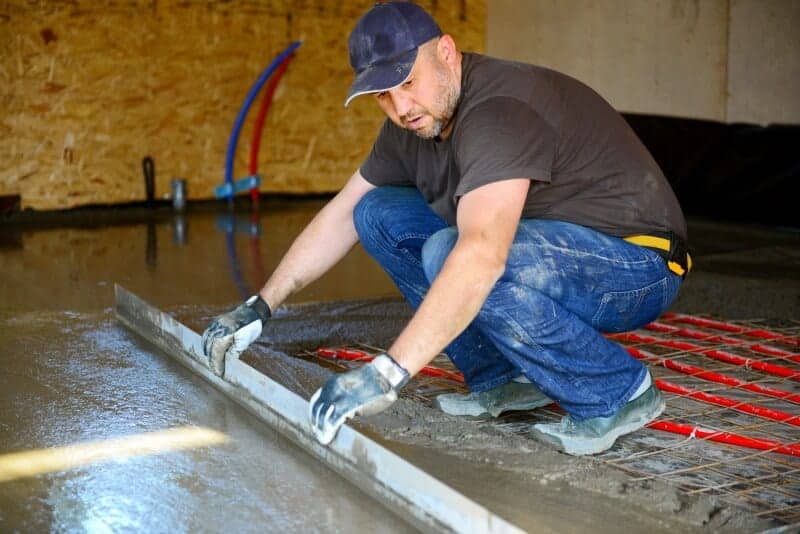Can hardwood floors be laid on tiles?
If an existing floor covering of tiles is to be replaced with parquet, this is generally possible without removing the old tiles.
However, there are a number of important aspects to consider when laying parquet on tiles. The following article will tell you what these are.
Which parquet is for laying on tiles Suitable?
Multilayer parquet is best suited for laying on tiles.
Due to its construction in several layers, less tension is transferred from the parquet to the underlying tiles.
But also the laying of solid parquet is possible in principle. However, in this case it is advisable to use a decoupling pad (e.g. fleece) as a transition between tiles and parquet, as this reduces the voltages occurring.
The best choice for solid parquet is oak, as this type of parquet has relatively low swelling and shrinkage behaviour compared to other parquet types – even in damp conditions – and works correspondingly less.
What is to be done in the preparation of the tiled floor Note?
With the tiled floor itself, it is advantageous if it is as large, stable tiles as possible. Mosaic tiles are suitable for laying of parquet less good, as the many joints make it easy to deformations of the parquet.
Before parquet can be laid on tiles, the floor must be prepared accordingly.
It is necessary to clean the tiles thoroughly in the first step and remove all dirt and residues of care products, otherwise a separating layer may form and the parquet adhesive may not hold properly.
Furthermore, the substrate for laying parquet on tiles must be flat and solid.
Therefore, it is necessary to check carefully whether the existing tiles still adhere accordingly to the substrate.
The best way to find out is to tap every single tile. If hollow-sounding or loose tiles are discovered during this process, they should be removed together with tile adhesive seam and the resulting gaps in the floor filled with filler.
The tiled floor is then sanded and – if necessary – a 2-component epoxy resin primer is applied as an adhesion bridge. This is too smooth on its own after drying to absorb a levelling compound. Therefore the primer must be sprinkled with quartz sand directly during application. This is the only way to ensure mechanical bonding of the filler to be applied afterwards.
The final and decisive step in laying parquet on tiles is theapplication of a suitable levelling compound, with which joints and other unevenness in the tiled floor are levelled.
Only when the substrate is completely dry, flat and solid can the parquet be laid on the tiles. The prepared work requires the greatest care, so that there are no undesirable problems when laying the parquet.
It is therefore generally advisable to have parquet laid on tiles by a specialist.
Parquet on tiles: fully glued or floating Moved?
Basically, parquet can be laid on tiles both full-surface glued as well as floating . In both cases, dismantling is not possible, as the tiles are severely affected by the preceding preparations and are no longer visually appealing.
In general, experts recommend full-surface gluing of parquet to tiles using parquet adhesive, as this type of installation has certain advantages:
Due to the fixed connection with the substrate, fully glued parquet ensures a pleasant kicking feeling and also prevents sound transmission.
Therefore, in this case, footfall sound insulation is not necessary. With floating installation, on the other hand, the parquet only lies loosely on the tiles and thus amplifies the sound. Accordingly, it is essential to ensure effective impact sound insulation for this type of installation.
In addition, a vapour barrier is required for floating parquet on tiles in order to be able to absorb any moisture on the substrate.
It should be noted that the floor construction with floating laid parquet on tiles becomes considerably higher due to the required steam barrier and impact sound insulation than with fully glued parquet.
As a result, there may be unsightly height differences at transitions to other floor coverings or doors may have to be shortened.
In rooms with floor heating, floating parquet on tiles is not recommended. The additional layers have a strong thermal insulation effect and lead to a reduced thermal conductivity of the floor.






